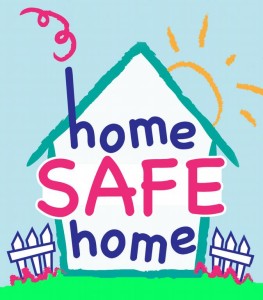 Just because you don’t notice any visible problems, you can’t assume that your house is safe. In fact, danger could be lurking in the attic or the fuse box. But don’t worry. By performing some simple checks, you can keep your house and family safe.
Just because you don’t notice any visible problems, you can’t assume that your house is safe. In fact, danger could be lurking in the attic or the fuse box. But don’t worry. By performing some simple checks, you can keep your house and family safe.
In this article, we will give a list of 6 safety checks that all homeowners should perform.
Radon test
Radon is a radioactive gas that can cause lung cancer. It is a colorless, odorless gas formed when uranium found in the soil decays. It will rise through the cracks and holes in the ground and your foundation. Radon can get trapped in the house especially during the cold winter months when people keep their windows closed. Studies have revealed that nearly 1 in 15 homes have higher than normal radon levels. Remember that this problem can affect your home, even if it doesn’t have a basement.
Radon testing kits are inexpensive. They cost just $20. There are 2 types of testing kits. The long term kit is said to be better than the short term kit.
The average radon level inside houses is estimated to be 1.3 pCi/L. If the radon level inside your home is 4 pCi/L or more, you should install a radon mitigation system.
Carbon-monoxide monitoring
Carbon monoxide is as deadly as radon. Gas leaks from the furnaces and appliances cause hundreds of deaths each year. When your chimney flue or furnace vent gets blocked, carbon monoxide can get trapped inside the house. Battery powered carbon-monoxide detectors cost only around $40. Besides investing in a detector, you should get your furnace and other heating systems inspected once a year.
You can reduce your carbon-monoxide risk by taking some simple precautions.
- Take your car outside for warming it up. Don’t do it in the garage.
- Don’t use gas stoves to heat your indoor space during winter months.
- If you are planning to use a portable generator, buy a long extension code and put the generator away from your house.
Assess the safety of your wiring
This requires some familiarity with electrical wiring. A homeowner should know where their electrical panel is. They should also know what appliances are controlled by each item in the panel. Don’t use high amperage circuit breakers (higher than 20 amps) as they are a major fire hazard. You should also get your panel properly labeled.
Lint check
Most people diligently clean the lint inside the dryer but very few take the time or trouble to clean the dryer vent and exhaust duct regularly. Your cloth dryer can cause fires and bring your house down.
Lint is highly combustible and that explains why the ducts and vents behind the dryer should be cleaned periodically. Avoid flexible dryer ducts made of plastic. Instead, use rigid metal ducts.
Check for lead and asbestos
If you have an older home, you should get it checked for lead and asbestos. Asbestos in vinyl flooring and lead in paint can cause problems when the flooring or walls are scraped, sanded or broken apart. When you inhale dust filled with lead, you will damage your nervous system. Asbestos increases your risk of lung cancer when its fibers are inhaled.
Lead test kits are relatively inexpensive. You can buy them at most hardware stores. If asbestos or lead is present in your home, you must not remove them yourself. Hire an experienced contractor to minimize the risk.
Mold inspection
Mold can cause respiratory problems. Some mold strains are also deadly. The problem is the moisture trapped inside. It can be caused by a bathroom that vents into the attic. Amateur insulation can also cause problems.
You can prevent most mold cases by checking the traps under your sinks periodically. Make sure that your home is properly vented. And don’t forget to check the traps periodically. You should preferably get your home inspected by a professional to see if the mold problem is widespread.
